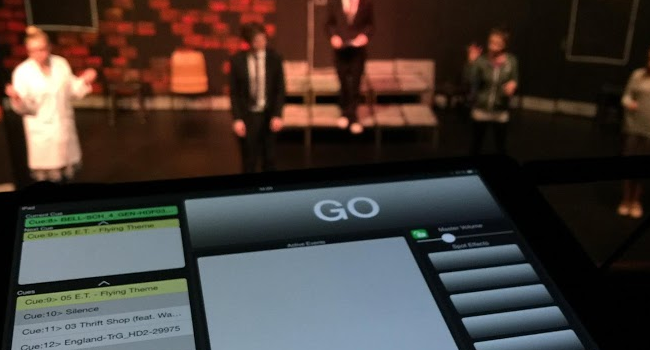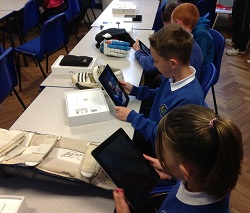Facilitating rewarding learning experiences for children in a kindergarten classroom to further their understanding is a huge task; a wide range of abilities, different exposures to skills, variety of languages spoken, all contribute to the need to provide high quality, individualised learning activities.
This is where the iPad shines as a platform to transform learning to a new level. The range of apps available is overwhelming, however, taking things back to basics and using a small range of key, good quality, apps is essential.
We know that mobile technology can work wonders for the classroom, but how can it be used during Performing Arts productions? Ian Fletcher of Driftwood Software explains how the iPad is the perfect tool for setting the right atmosphere.

Close your eyes and listen. What do you hear? If the answer is “nothing”, then try again. There are very few places in the world that are completely silent. Every room, every environment has a sound. Understanding this and using these soundscapes correctly within a school or college Drama production can make a massive difference to the suspension of disbelief you are trying to create. And the act of thinking about and designing them can be a fun exercise for a drama class and make sound a more inclusive subject.
Apple have produced a series of ebooks to help teachers integrate apps into their daily classroom practice. The Apps in the Classroom series is inspired by Apple Distinguished Educators, and each book contains a collection of activities that allow students to utilize a particular app to demonstrate their learning.
John Dewey, probably the most influential of all American philosophers, was born in Vermont in 1859. After graduation from the University of Vermont he received a PhD from The John Hopkins University and taught at a number of major universities, gaining an international reputation for his contribution to the pragmatic approach to philosophy (Dewey, 1938).

In 2010, the primary school I was Headteacher of gained seven grade ones in an ESTYN inspection, while several sector leading examples of practice were highlighted by ESTYN and the Welsh Government.
Shortly after, I reflected on the previous twelve months, which had been hectic to say the least, and challenged myself to take the school to the next level. But how?
After talking to a group of eleven year old pupils something quickly became very clear. These pupils, using technology, peer support, networks of collaboration and online mobile resources were able to build an education for themselves anywhere and at anytime.
Matt Britland focuses on the impending force of cloud computing as the future dominant mover and shaker in schools and colleges which is set to underpin what we now call 'social learning'.

A couple of weeks ago I was asked what I thought the future of technology in education was.
It is a really interesting question and one that I am required to think about all the time. By its very nature, technology changes at a fast pace and making it accessible to pupils, teachers and other stakeholders is an ongoing challenge.
So what is the future? Is it the iPad?
No, I don't think it is. For me, the future is not about one specific device. Don't get me wrong, I love the iPad. In fact, I have just finished a trial to see if using them really does support teaching and learning – and they have proved effective. I've written about the trial in more detail on my blog.
Photo credit: johnnyryan1

A community-driven platform for showcasing the latest innovations and voices in schools
Pioneer House
North Road
Ellesmere Port
CH65 1AD
United Kingdom